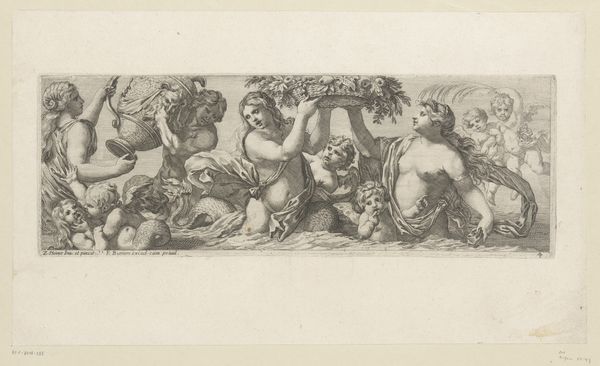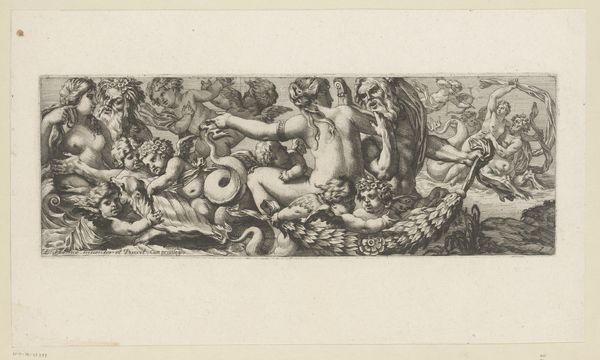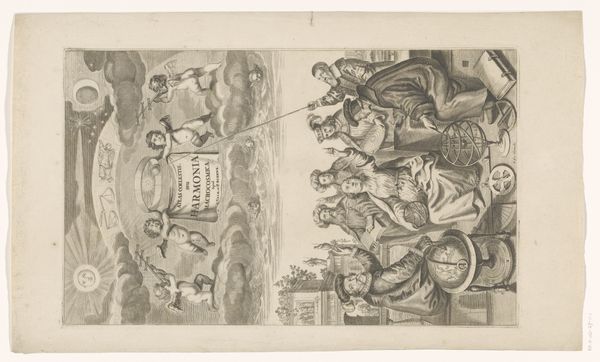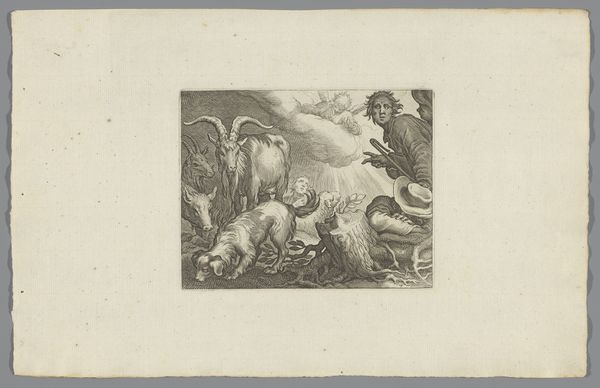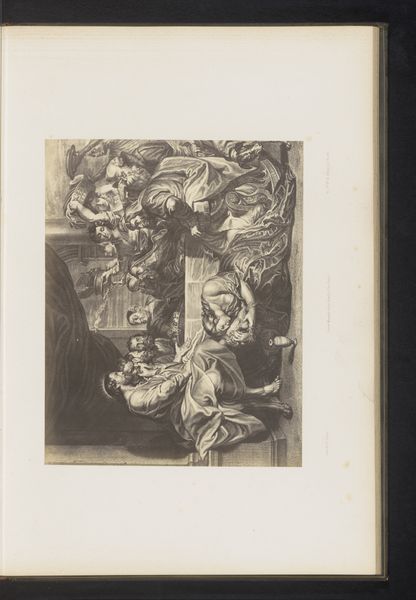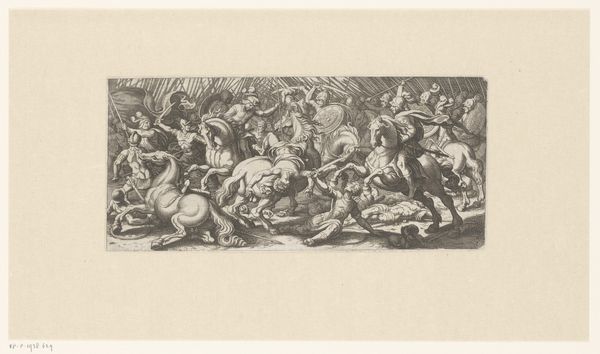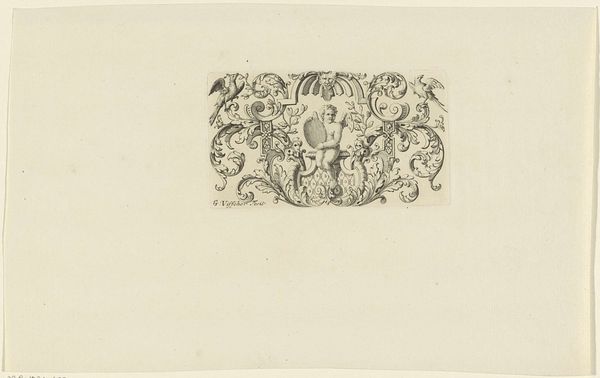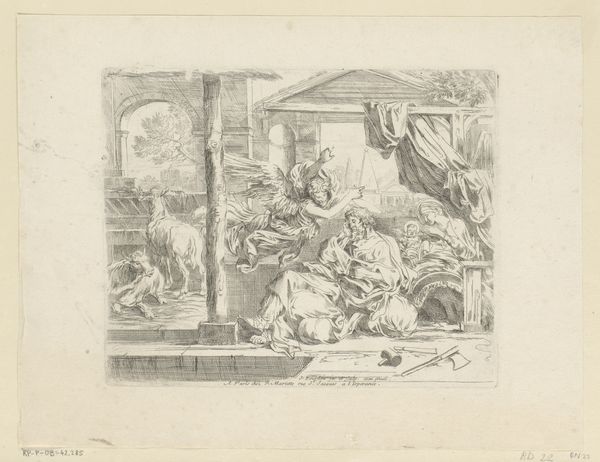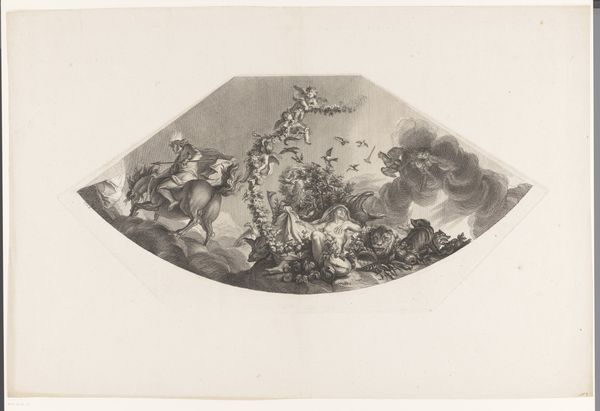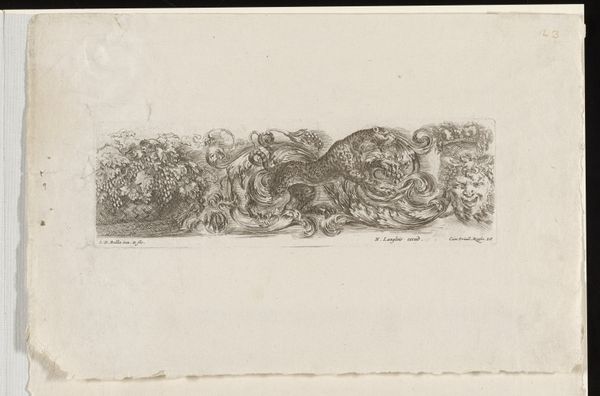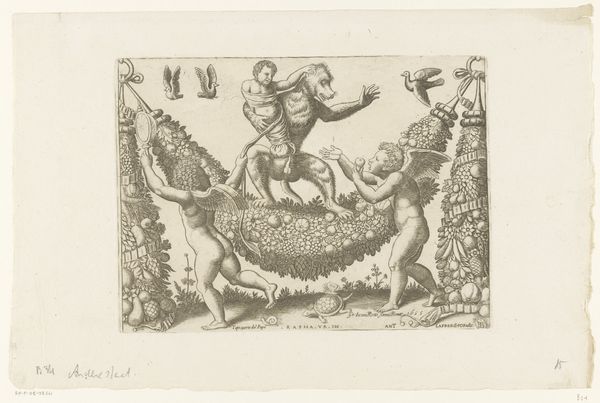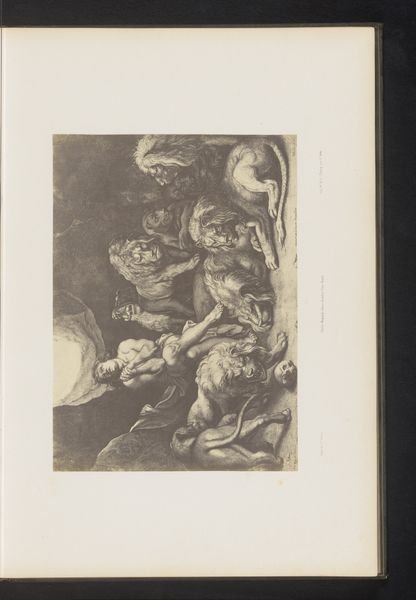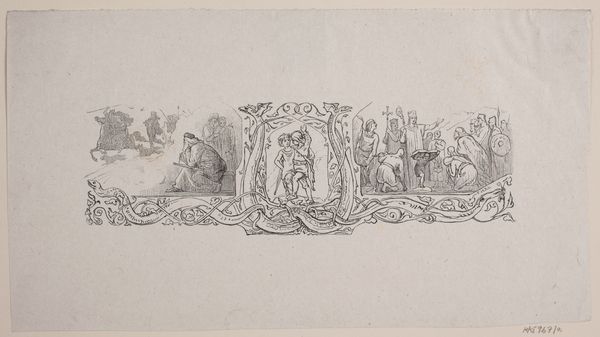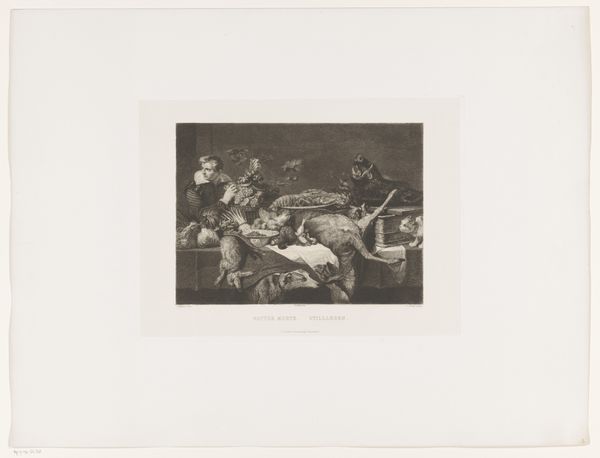
engraving
#
allegory
#
baroque
#
figuration
#
nude
#
engraving
Dimensions: height 131 mm, width 375 mm
Copyright: Rijks Museum: Open Domain
Editor: This engraving, titled "Putto met brandend en doorboord hart bij een paar waternimfen," was created sometime between 1630 and 1720 by François Bignon. It strikes me as a curious combination of mythological figures with an almost whimsical element, thanks to the cherubs. What draws your eye in this piece? Curator: Immediately, the composition seizes my attention. Notice how the artist distributes the figures along a horizontal axis, creating a frieze-like effect. The strategic placement of light and shadow delineates form, enhancing the tangibility of the figures, drawing focus to the nymphe’s curves and the cherubs’ postures. It provides them with volume and definition and it guides the viewer's gaze across the image. Editor: That's a great observation. It almost feels like a stage with the characters lined up. Is there a hierarchy at play in the arrangement of figures, would you say? Curator: Potentially. Considering formal elements such as size, elevation and proximity, this could be interpreted as a symbolic depiction of love and beauty. This aligns to common interpretations of Baroque art as having elements of display of power, wealth and idealised forms. However, formal elements such as lines, colour and depth play significant roles to consider, while interpreting it in the historical and social background of those times. What do you think? Editor: I think I need to dive deeper into the Baroque's approach to line and form to better understand that! Thank you. Curator: Indeed! Appreciating this complex interaction illuminates an understanding of art theory, which goes hand in hand with decoding it.
Comments
No comments
Be the first to comment and join the conversation on the ultimate creative platform.
